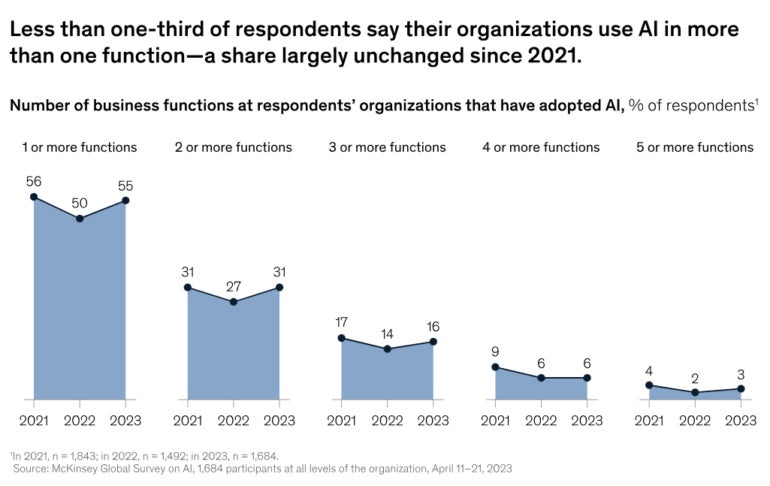Automation Tech to Form Central Effort in Australia to Operationalise AI in 2024

[ad_1]
Automation use cases like intelligent document processing and communications mining could help organisations fast-track artificial intelligence operationalisation in 2024, according to a report from UiPath, as businesses seek to combine AI with automation to improve processes.

Mark Fioretto, area vice president and managing director at AI-powered automation software company UiPath, said 2024 would see businesses in the Australasian region taking advantage of technologies in the traditional automation space but using AI to supercharge their results.
UiPath also predicts automation will drive process improvements in a number of areas together with AI, including improving AI safety processes by keeping humans in the loop and enabling environmental, social and governance data capture and reporting to be streamlined.
Jump to:
C-suite sees operationalisation of AI as leading priority for 2024
The drive to commercialise generative AI capabilities inside products or processes inside organisations is the biggest AI trend UiPath is seeing among Australia’s C-level executives.
This comes as organisations struggle to adopt AI across their enterprises. A global report from McKinsey, for example, found almost half of organisations (45%) have no AI at scale (Figure A).

Fioretto said operationalisation required businesses to put AI-sourced information into practice, which was likely to increase the market’s embrace of AI and automation combinations in 2024.
SEE: How Australia is adapting fast to a generative AI World.
“The C-suite really wants to operationalise AI and drive productivity in different ways within their organisations, as well as servicing customers in an improved manner,” Fioretto said. “This is making the combination of AI and automation really top of mind in C-suites right now.”
AI-powered automation to deliver productivity advantages
A global UiPath-commissioned survey of 200 companies, conducted by Bain & Company, found 70% of executives think AI-driven automation — combining both AI and automation components — would be “very important” or “critical” in fulfilling their business’ strategic objectives.
Most executives (85%) singled out higher productivity and efficiency as the primary advantages. McKinsey’s research estimates that, when generative AI is combined with other technologies, work automation could boost annual productivity growth by 0.2 to 3.3 percentage points.
“Having generative AI available in a more consumable way for the broader market means we are now seeing a combination of generative AI with specialised AI as customers adapt or use generative AI and different commercial models to commercialise AI inside processes,” Fioretto said.
Multiple AI and automation combinations are expected to rise
With executives seeking to implement use cases that can quickly generate value from AI, UiPath expects an uptick in Australian companies using AI and automation opportunities in 2024.
Intelligent document processing
UiPath singles out intelligent document processing as a key use case. IDP allows industries using lots of documents, such as the banking, healthcare, insurance and legal sectors, to improve their speed, capacity and costs.
“IDP is a great example of creating a huge amount of efficiency combining generative AI and specialist AI with automation,” Fioretto said.
For example, Heritage Bank’s 2017 commitment to go digital and scale back- and middle-office processes has led to 90% process automation in some areas, including the compiling of living expense reports for loan applications. The bank, which is a UiPath customer, has also achieved a 98% accuracy in machine learning across its banking and wealth management businesses.
Communications mining
AI and automation can be paired to help organisations understand and act on emails, texts and unstructured data. For example, many organisations have contact centres with general or unmanned inboxes for inquiries, which need to be categorised and routed to the right person.
SEE: Australia’s telcos are deploying generative AI to improve productivity.
“You are able to take the logic generated by large language models and through available information in the marketplace, but then, you are using specialised AI to route or enable the processing of the customer request efficiently within an organisation,” Fioretto said.
Automating automation
The natural language processing power of AI will “automate automation.” In the coming year, UiPath said developers and business users will increasingly ask their automation platform to build automations using natural language or no-code inputs. The platforms will be able to convert these prompts into real workflows, test cases, process mining and individual tasks.
AI safety success will lean on practical automation capabilities
The push to enhance AI safety will continue during 2024, according to UiPath, as the market seeks to mitigate the potential for misuse and miscalculation in the use of the technology. Fioretto said this will require guardrails and controls, supported by automation capabilities.
Human in the loop
Organisations are likely to expand “human in the loop” capabilities through “exception tagging,” which creates automated notifications if a process is not followed by flagging it as an exception. Humans can either be brought into the loop, or a reason can be captured for the exception.
Task mining
Task mining can be used to unearth or identify processes that are aged or not constructed correctly. This can create a “hidden floor” ensuring problem processes can be identified for discussion and uplifting the way AI governance processes or policies will be applied.
ESG reporting another application for AI-powered automation
The requirement for Australian organisations to report under new ESG standards from the International Sustainability Standards Board beginning on July 1, 2024, could drive further use of AI-powered data and reporting automations within organisations.
SEE: Explore the benefits of applying ESG standards to business processes.
Fioretto said new sustainability-related disclosures would require the collection, compilation, validation and reporting of ESG data across complex organisations, including supply chains, in an environment where managing this ESG data collection process is proving challenging.
AI-powered automation could help monitor metrics like carbon emissions, streamline data collection, processing, analysis and reporting, and reduce the likelihood of mistakes. Data could also be extracted, interpreted and processed from structured and unstructured documents.
AI and automation to redefine work as we know it
A recent report from the Australian Computer Society found that up to 90% of workers could be affected by artificial intelligence. UiPath expects 2024 to be characterised by a growing understanding of how humans will work collaboratively together with machines in the future.
“If I go back in time and think about when the internet was made usable and accessible to the general public, no one would have guessed the impact that was going to have in our work lives over time, or the way we interacted with each other,” Fioretto said. “We are in a similar situation now in terms of how AI will coexist with how we operate as humans.
SEE: AI is ranked one of the most important technologies for 2024, says IEEE.
“Over time, we will see an evolution in how it gets applied to how we work, but I think AI will be embedded in the way we interact with each other on a personal level and business level.”
Automation and AI will augment our human capacities
AI and automation is not about replacing humans, Fioretto said, but augmenting our capacities with data from the internet and other models. Human logic will still need to be applied to ensure AI models are responsible and fit within the parameters of how we interact with each other.
“Take no-code or low-code applications and technology and how they will apply in the workplace — the opportunity is enormous, not just in terms of efficiency but in creating a more satisfying time at work, where we are more focused on high value tasks,” Fioretto said.
[ad_2]
Source Credit




